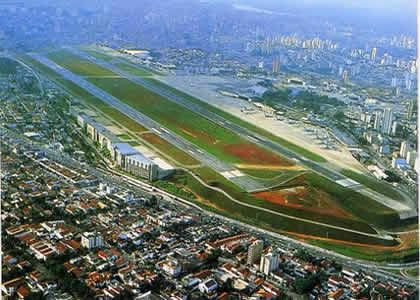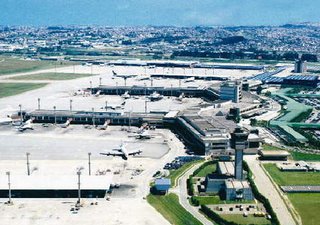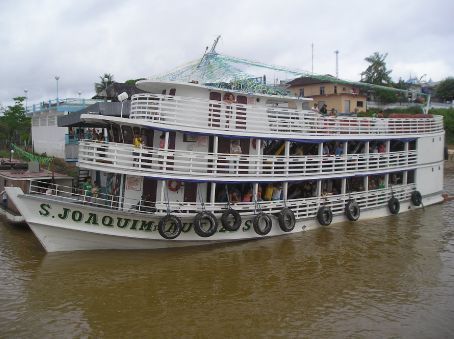AirportsSão Paulo has three international airports: Congonhas, in the city of S.Paulo itself, Guarulhos, in the city of Guarulhos, in Great S. Paulo, and Campinas Airport, in the city of Campinas, located 100 km (54 miles) from S. Paulo and connected to it by two highways (Rodovia Bandeirantes and Rodovia Anhanguera). The three airports operate domestic and international flights, but Guarulhos is the biggest of them.
Gol (website:www.voegol.com.br) and TAM (website: www.tam.com.br) operate the largest number of domestic routes. Air taxis are available between all major centres. Air PassesTAM Brazil Airpass is available for internal flights with TAM. It can be purchased only outside of Brazil from any IATA international carrier. Four- or eight-flight passes can be purchased. Validity is for 21 days from first day of travel Getting Around by WaterFerries serve most coastal ports. One company, Barcas S/A (tel: (21) 4004 3113 and http://www.barcas-sa.com.br, operates ferries between Rio de Janeiro and Niterói, and between Angra dos Reis and Ilha Grande. River transport is the most efficient method of travel in the Amazon Delta. The ferry between Belém and Manaus is a popular route, served by a number of different companies.The trip takes a minimum of 3 days and 3 nights but can last one week, depending on the kind of ship. More information about the trip can be obtained, for instance, at http://www.amazonstar.com.br/
Getting Around by Rail
Getting Around by RoadBrazil has roads ranging from very good paved highways to pot-holed, dusty tracks. Federal highways crisscross the country between major cities and are denoted by the letters BR plus a number. São Paulo State has the best roads in the country and they take the initials SP of the state plus a number. Traffic drives on the right. Coaches (buses) are by far the easiest and most popular way of getting around Brazil. Services between major cities and tourist destinations are generally comfortable and efficient but distances are long. Main routes include São Paulo to Rio de Janeiro, Recife to Salvador and Florianopolis to São Paulo. There are many operators including Viação Cometa, Expresso Brasileiro (tel: (11) 5061-7566; website:www.expressobrasileiro.com) and Auto Viação 1001 (tel: (11) 4004-5001; website: www.autoviacao1001.com.br). Renting a car is easy as there are many companies operating from major airports and main city centres. Drivers are generally required to be at least 21 years old. Regulations imposes that the minimum driving age is 18. The speed limit is 110Km/h (60mph) on most national highways and no more than 80Km/h (50mph) in cities. Passing on the right is forbidden. Seat belts must be worn by drivers and passengers. An International Driving Permit is required. The Best roads (mainly in the State of S. Paulo) have a very good emergency breakdown service: Members of automobile clubs from some countries can enjoy reciprocal benefits with the Car Club do Brasil (tel: (21) 2533-1129 (www.carclubsite.com.br). Getting Around Towns and Cities
Taxis are abundant in most cities and are identified by red license plates. Fares are inexpensive, costing a little more for the ‘special' taxis with air conditioning and better comfort. Willingness to accept a taxi driver's advice on where to go or where to stay should be tempered by the knowledge that places to which he takes a visitor are more than likely to give him a commission - and the highest commissions will usually come from the most expensive places. Taxis are metered and passengers should insist that the meter is turned on. Fares are slightly higher at night and on Sundays. Tipping taxi drivers is not normal practice. Journey TimesThe following chart gives approximate journey times (in hours and minutes) from S. Paulo to other major cities/towns in Brazil.
| ||||||||||||||||||



